STARTING OUT: 9/27/94 Vol. 1
Notes from the road:
This newsletter is our method of staying in touch with our many friends throughout Alaska and the
country as we realize an amazing adventure. Melody and I have hit the road in a 27' motorhome
with our Himalayan cat (a remarkable traveler, by the way), our bicycles, a Macintosh-compatible
computer system with laser quality printer, and an 8mm home video system. 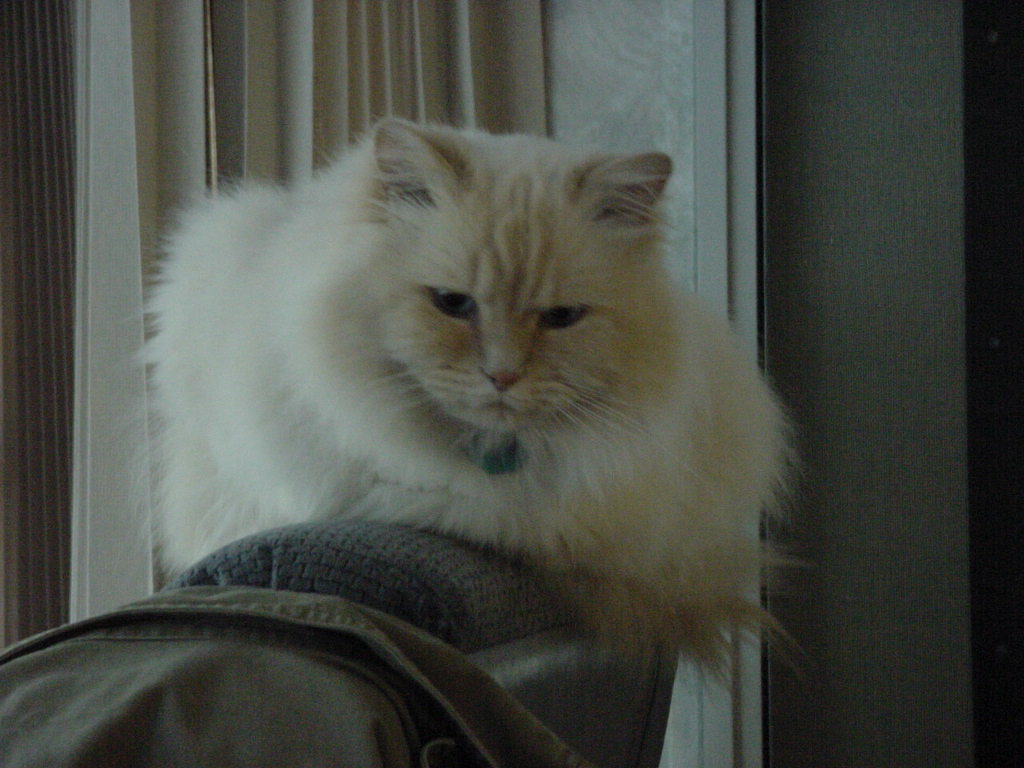
We have been counting our blessings, having sold the 3000+ square-foot house on Chena Ridge
in Fairbanks and shrunk our lives into a small condo (823 square-feet) and an ARR-VEE. It was
a great choice. As we move gracefully toward middle age we realized our lives were dominated
by a huge house, annoyingly long hours at work, and too little time to ourselves.
About seven years ago we developed our five-year plan. OK, so it took two years longer than called
for. The former Soviet Union could not get a five-year plan completed in 20 years, so we are doing
OK on that score. Finally the pieces fell into place. Real Estate values rebounded, I was able to
sell my writing business, and I was offered a remarkable job, with a remarkable family, doing the
most interesting work I have ever done for money.
In March the Binkley family, which operates the Riverboat Discovery in Fairbanks, invited me to work
as a commentator on the Discovery III. D-3 as we call her, is the last operating true sternwheeler
on the Yukon River system. It was the opportunity of a lifetime. Summer 1994 turned into the kind of
summer most people dream about (or at least I dreamed about) -- including working for a family which
has operated on the Tanana and Yukon Rivers for four generations. They were all patient and I
received excellent training, and thoroughly enjoyed the experience. I will return to do that same
work in 1995.
Melody left her job at the University of Alaska Fairbanks with the Office of the the Vice Chancellor
for Administration (Quality Management Specialist). She also spent much of the summer managing the
details of selling the house and shrinking our lives.
We had a lot of help from friends and relatives packing and moving, and re-establishing ourselves in
the condo before hitting the road.
Melody's last day at UAF was September 2; my last work day was September 14. On September 17 we
left Fairbanks for Anchorage and then the Alcan. By the way, to call the stretch of road from the
Canadian Border to Haines Junction the Alcan Highway, should be declared a linguistic felony. To
refer to that stretch of road as a "highway" reveals a poverty of expression in the English language.
My late mother called it an "adequate farm-to-market road," 40 years ago. Today, it is being
"improved" in part using your (U.S.) tax dollars. (One Canadian said "We'd stop working on the
road if you Yanks would stop sending us money!")
I am fairly certain it will be very nice when it is completed, just in time to start over, perhaps
for the Construction Centennial Celebration in 2042.
Kidding aside, and with the exception of that one stretch, it was a good trip Outside. We averaged
about 300 miles per day and almost 10 miles per gallon. We decided to go all the way to the West
Edmonton Mall (Alberta), which bills itself as the Largest Mall in the World. It is also home to
a ferocious roller-coaster. One of Melody's goals is to ride them all.
By the way, there was snow in places on the ground near the Canadian border, and termination dust
on surrounding hills for miles and miles. But we did not have to drive in snow, and only one night
was it below freezing (at Haines Junction).
Our plans call for visiting my dad in Seattle and then traveling across country (mostly northern
tier) through mid-November, and back (southern tier) arriving in Phoenix in Mid-December and Seattle
around the first of the year. Major goal: avoid the "S" and "F" words (Snow and Freezing).
Future editions of this trav'lin' newsletter will attempt to present rationalizations, place blame
(mostly on friends and colleagues), and discuss life stage development (part of the rationalization
thing) as it relates to this adventure.
Meanwhile, Heather is staying in the condo in Fairbanks and continuing her college education.
She also forwards our mail, if you'd like to provide support and encouragement (or ridicule and
laughter). Go ahead, be an enabler!
Hope you all have a good winter.
THE "FRONTIER": 10/15/94 Volume 2
Greetings once again from the road (Someplace East of Spokane):
Strange as it may seem, the trip really begins in Spokane, Washington. That is because we have not been
in communication with anyone further East than that, so Spokane represents "The Frontier" in terms of
this adventure. We had considered launching an unmanned prairie probe (Winnebago I), but decided against
it as too costly and utterly incapable of gathering appropriate data.
We spent time in Seattle with Phil's father, Joe, tuning up the rig from our Alcan odyssey -- a few minor
items. As a last minute thought before leaving Fairbanks we brought our bicycles. We had them tuned
at a shop in Issaquah, just east of Seattle -- excellent alternative transportation. Phil spent time mowing
the family lawns and former paddock (without a horse it is just a field with a stable at one end).
Riding-mowers are great fun! We trimmed trees, visited, installed hardware and software on dad's Mac,
and on and on. When our mail packet from Fairbanks arrived we set out for The Frontier and thence to
Idaho, Montana, and points East.
Between Seattle and Spokane we went through Stevens Pass on Interstate 2. We'd planned on getting video of
the freight train going over the pass but it disappeared about where we thought it would make an interesting
shot. Turns out the railroad runs through a seven mile long tunnel UNDER the pass, so it caught up with
us later! We overnighted at Skykomish, a beautiful little railroad town about halfway up the west side of
the Cascade Mountains. Interstate 2 shares the north side of the narrow valley with the Skykomish River.
An old steel girder bridge crosses the river into town where the railroad runs. We heard four trains in a
single night, each with a different tone to its whistle. Oddly, the sound and interruption of sleep was not
troublesome, but somehow comforting.
At Cashmere, Washington, we pulled off and were surprised to find the Applets & Cotlets factory. That was
fun, and tasty. The town is charming. At Pistashen (Pop. 200) we stopped at a fruit stand/antique store and
bought fresh fruit. (Did you know that, Fairbanks experience aside, fresh, sweet, juicy pears don't crunch
when you bite them? THOSE would be apples. And apples are crisp; they snap, and squirt juice half way across
the RV when you bite into them.) The clerk gave us some "over ripe" tomatoes which were as nice as most of
the produce in supermarkets! Fresh tomato soup. Mmmmmm!
Life in small towns is different, with no chain stores and fewer fast food joints. We spent one night in
Davenport, about one hour west of Spokane, out on the open prairie. To get there we drove past fields of
just-sprouting winter wheat, and acres of freshly mown hay and various grains. Parallel tracks from combines
and other farm machinery ran through the fields, and trailed to the horizon. Small, fresh-looking farm houses
next to old gray, previous-generation barns and homes. A few horses and cattle, and occasional sheep and pigs
dotted the draws and smaller farm-to-market roads which ran like arrows to a far away place.
In Davenport, we walked to dinner at Edna's Drive-In. Two tasty hamburger Ds with one small fries (looked
like two complete Idaho spuds to me!) and one medium diet cola (looked like a large!) cost: $7.27. The food
was good, the people pleasant. I noticed the general populace ate at Edna's -- older folks and young
farmhand-types alike. The waitperson, who was most likely a local high school girl, was most kind. For
example, an older gent came in for an ice cream cone and a coffee, obviously for himself and his elderly
wife out in the car. The girl served the slightly stooped gentleman over-the-counter, helped him get a grip
on the items, and then ran around the counter to open the door for him. She smiled, he smiled, and they exchanged
pleasantries as he left.
In Spokane we spent a delightful day with Ron and Becky, whom many Fairbanksans will recall.
They relocated last year back to their home turf in Eastern Washington after 13-14 years in Fairbanks.
We spent part of Sunday at their family farm west of Spokane, helping with yard maintenance (more
mowing) at Ron's parents' place. We also visited downtown Spokane, site of Expo '74 (Fairbanks, Alaska's,
mass transit system got its first buses as surplus from Expo '74!). Expo '74 is a beautiful and active accent
to the heart of an interesting city.
Moving East on Interstate 90: The silver mining district of Northern Idaho is reminiscent of Alaska. In some
places it is much like the mining regions of the Interior, north of Fairbanks, around Central and Circle.
The historic mining towns on steep hillsides remind us of Southeast Alaska cites like Sitka, Petersburg, and
Ketchikan. The older architecture is pure Western Americana. Many of these towns have neighborhoods which
remain unchanged since the 40s, 50s or even longer, including red-brick courthouses and city halls, false-front
retail stores and main streets, clean avenues, and diagonal parking. There are also parts of these towns (usually
designated East or West Such & Such) with double- and single-wide modular homes -- contemporary architecture's
functional and cost-effective contribution to life in remote America. Populations run from around 20 to 2000.
There are few chain stores except fast food and convenience stores near the interstate, and 'guy-stores' - like
Tru-Valu/Ace Hardware, Radio Shack, and NAPA - in the downtown area.
I-90 crosses into Montana at the top of Lookout Pass in the Northern Bitterroot Mountains, which form the spine
of the Idaho-Montana Border. Along this route the entry into Montana is a remarkable 26+ miles downhill with only
minor 'ups' before continuing down, down, down. Obviously the climb east, from Coeur d'Alene, Idaho, to the pass,
was a long one!
In Montana we stopped about an hour north of Missoula at Alberton, an RV park on the banks of the Clark Fork River.
At this point the highway, river, and railroad share a gorge about 1/4-mile across. The Burlington Northern freight
train went by across the river at about dusk, so quiet we almost missed it. We went out in shirt sleeves to look
(this was about 6:30 p.m., 10/10/94). It was +65¡F! Another train of around 100 cars rumbled softly by about three
hours later.
Talking to friends over the past year about our travel plans, some expressed awe ("Geeee!"), some showed surprise
("Wow!"), and others intoned trepidation ("Mid-life crisis, huh?"). The reactions were fun, and mostly encouraging.
That last one was most curious, though. "Mid-life crisis" is a pop-psychological term rendered almost meaningless by
over-use, even when properly applied. Our trip is better described as an inquiry, complicated by the fact that while
it MAY be a search for an answer, the question has not actually revealed itself. I am fairly certain that Stanley
Levinson's seminal work on adult development (Season's of a Man's Life) accurately speaks to this kind of inquiry.
What we are doing is connected to life stages, centering around completion of certain developmental tasks (such as
childrearing, career change, loss of a parent/child/significant other, etc.). I am also certain that such inquiry
after a major life change (selling one's home and business, changing careers, buying an RV, and hitting the road)
takes many forms.
Inquiry seems important. There are lots of ways to inquire. We are sure enjoying ours!
WELL IT FELT LIKE A DISASTER! 11/1/94 Volume 3
Greetings from the hi-ways and and buy ways:
Every silver lining has a cloud. At the top of Lost Trail Pass (7000') on the Continental Divide in the northern
Bitterroot Mountains, the Alaska Road Warrior slipped into a coma. It was late in the afternoon with light hail
falling and a snow storm threatening. Melody drew the short straw and hitched a ride into the community of Salmon
(pop. 1000 or so), about 50 miles away. She located a Ford dealership and they sent a wrecker; a 1976 International
Harvester one-ton, to haul our 2-ton beached whale down 30 miles of steep, winding (but paved) logging road. This
personally guided tour of the lower Salmon River Valley cost $180 in towing charges; the white knuckles were free!
We spent the night in the parking lot of the dealership. The next morning, in a matter of minutes, Gary "Oh-No" (as in
Oh No! Not electronic ignition!") the Mechanic, isolated and replaced a burnt out wire.
"But Gar!" I can hear you saying, as did I, "The burnt wire seems like a symptom. Why did it burn?"
Gary shrugs, "I dunno."
Back on the road by noon we drove mostly along the keel of the Salmon River, the longest unobstructed river in the
Continental U.S. The Salmon has been called the River of No Return because while early travelers could go down the river,
it is too rugged to navigate up. This area, north of the Saw Tooth Mountains, was a drive past small farms and ranches,
mountain passes, hunting lodges, and narrow gorges sharing railroads, highways, and the ubiquitous Salmon River.
The roads were windy, steep in places, and the scenery was spectacular with fall colors, ponderosa pine, rocky-sandy,
semi-arid dessert areas, and miles of mining and pioneer history along the Lewis and Clark Trail.
Following a full day of no problems we settled at an RV park in Sun Valley (Ketchum, Idaho, actually). We even popped
for cable TV! The next day, after a nice evening, we set out for Craters of the Moon National Park in southern Idaho.
We drove through miles and miles of rugged land, an area peppered with dozens of nuclear power plants, none of which
we could see, and high tension lines, some of which we could. As spectacularly scenic as it was, we were thankful we
were not of child-bearing age (all that radiation!), and happy to keep driving through the area.
A few miles from the park entrance we stopped and walked a hundred yards or so off the road. This is a lava bed as far as
the eye can see. The jagged formations, from large boulders, towers, and floes, to smaller rocks and cinders, would probably
wear out a pair of Reeboks in a couple days of hiking.
Next, we drove into the park on a 7-mile loop road. At the highest point, as far as we could get into the area, the Warrior
again lapsed into a coma. To make a long story short, (Phil got the short straw this time), a 3-ton wrecker from Arco,
Idaho, came out and once again we were towed into town. Arco's claim to fame: The first community in America to be lighted
by nuclear energy. Finally, a highly-trained and capable CarQuest auto-electric technician, John, isolated the problem.
A wire essential to the fuel pump was shorting whenever we set the emergency brake! It was a simple problem. As of this
printing (11/5) there have been no additional problems!
We thought traveling through the winter like this could keep us out of the snow. The snow on Lost Trail Pass (7000') and
Galena Pass (8000' - from which we would see the headwaters of the Salmon) - essentially both ends of the river - and a
blizzard at the largest and nicest truck stop we've ever seen, called Little America, in the heart of Wyoming, forced
us south. We had to miss Yellowstone National Park. We did visit and tour Mt. Rushmore, the Dakota Badlands, Wall Drug
(a remarkable multi-generation family business), Devil's Tower (featured in the film "Close Encounters"), the fully
restored turn-of-the-century state capital building at Pierre, SD; and Wind Cave National Park. Never driving over 55
(we just love cruise control), we sought out and visited the home of Laura Ingalls Wilder ("Little House on the Prairie"
author), an historic Victorian Mansion at Prairie du Chein, and a Mississippi sternwheeler dinner cruise and tour operation
at Dubuque, Iowa, (reminiscent, but smaller and not as up-scale as the outfit I work for in Fairbanks).
A journey across the country provides plenty of time and materials to inspire thought. 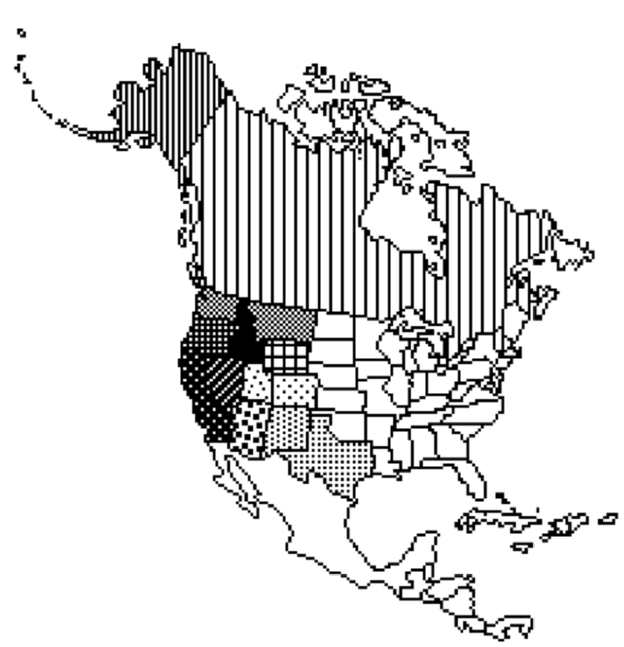 We skirt major cities, seeking the
more picturesque smaller state highways. They support my stereotype of an idyllic and pastoral America (the less idyllic
images are available on TeeVee!). With many attractions and most RV parks closed for the season, we have an interesting
time finding places to park for the night. Melody (Short-Straw) Erickson drove one of the heaviest truck traffic stretches
of interstate in the country, near Chicago. The trucks, tractors with up to three trailers, in every configuration, tore
past us by the dozens at speeds exceeding 65 MPH, four lanes across, for hours. That is what that part of the country is
about: transportation, supply, and manufacturing. The highway system, air traffic, and even water (The
Great Lakes and Mississippi River) are a huge part the economy -- meatpacker to the world.
We skirt major cities, seeking the
more picturesque smaller state highways. They support my stereotype of an idyllic and pastoral America (the less idyllic
images are available on TeeVee!). With many attractions and most RV parks closed for the season, we have an interesting
time finding places to park for the night. Melody (Short-Straw) Erickson drove one of the heaviest truck traffic stretches
of interstate in the country, near Chicago. The trucks, tractors with up to three trailers, in every configuration, tore
past us by the dozens at speeds exceeding 65 MPH, four lanes across, for hours. That is what that part of the country is
about: transportation, supply, and manufacturing. The highway system, air traffic, and even water (The
Great Lakes and Mississippi River) are a huge part the economy -- meatpacker to the world.
Up-state New York is beautiful; a fertile, marvelous country producing fruit, vegetables, wine, honey, and grains. Niagara
was uncrowded and beautiful, as rumored. That area of NY is also home to Cobblestone Country, an area with numerous and
beautiful homes, some quite large, made entirely of cobblestone.
Western states tend to be RV-friendly with plenty of parking, turnarounds, dump stations, and campgrounds. Eastern states,
particularly New York and New Jersey (so far) have not yet gotten excited about the self-directed RV traveler, seemingly
as a matter of public policy. Too bad since there is a visitor industry advantage to the RV-friendly state.
The common threads across the prairies are water & agriculture, transportation, and the human spirit. On the horizon are small
towns heralded by water towers. Silos stand as sentinels beside rail yards storing the bounty from the good earth. Church
steeples, under which communities gather to rejoice and mourn, populate even the smallest towns. We saw mostly full corn
cribs, plowed fields, rolls and bales of hay, and other evidence of hard work and honest toil. Is all this symbolic of
America's heartland, close to the soil and steeped in the work ethic? Or is it an anachronism?
The agricultural landscape changes from the rolling hills of Minnesota and South Dakota to the cliffs and more pronounced
hills of the Upper Mississippi River Valley. The types of crops change from the hardier sorghum, sunflower and potato of
Idaho and South Dakota to corn fields and fruit orchards. Throughout, pumpkins seem to be everywhere. These people must be
amazed that anyone would feel a need to actually pay money for pumpkin! We saw entire fields outside Minneapolis, MN, and
Rochester, NY, littered with bright orange pumpkins. They looked like International Orange crab pot markers or drift net
floats in a sea of rich brown soil.
Traveling and seeing the world has brought to mind dissonance on a number of cognitive issues. A couple years ago an obscure
philosopher (actually an employee with wisdom beyond her years) and I were talking about things like child rearing, career
choices, and age-related issues. She said "I have never thought about this before, but then, I have never been this age
before!" Along those lines, about two years ago it would have been hard to imagine buying an RV and hitting the road. Back
then we were still thinking it would be fun to bicycle or hike everywhere, as we had done during the first decade of our
marriage. Likewise, until this summer the thought of a helicopter ride into a national park was pretty foreign thinking.
But then, as the philosopher said, we have never been this age before!
Another friend and colleague, who recently left Alaska, reported that he'd never lived and worked as an adult anywhere but
Alaska. Having set out to amend that in our own lives, we have been filled with wonder at all that America has to offer.
Reading the Journals of Lewis & Clark (edited), and thinking about other explorers who first saw some of the sites we are
seeing, we realize what an incredible experience it must have been for the first Westerners to "discover" this country.
Leaving the provinces (Alaska) for a winter of travel and exploration is good stuff. (On 11/4 it was 78 above and
sunny in Gettysburg - We toured the Civil War Battlefields in shorts and T-shirts - more on that next time.
Hope you are having a good winter. We miss our friends and all Fairbanks has to offer, but then ...
 THE FABLED EAST: 11/30/94 Vol. 4
THE FABLED EAST: 11/30/94 Vol. 4
Comes the Holidays! A most faire greeting to all and the very best o' the season.
So, traveling in the land of Jefferson and Monroe has affected our patterns of speech!
We last left our weary travelers as they continued East, from Niagara Falls to Rochester, NY. Truth be known, we DID have
an outpost in the fabled East. In Rochester - Phil's aunt and uncle! Aunt Jenni is a world class quiller (one who does
quilling, an ancient and beautiful art of making items with curled and formed paper). Uncle Alex, a retired MD from Eastman
Kodak, assists his wife in her quilling by manufacturing hard-to-find tools, display cases, and other items. She travels
extensively in the US and even overseas. Alex the Provisioner, likes to collect and strategically use shopping coupons.
We are beneficiaries of this thrifty habit as he generously shares with his kids, and recently-surfaced nephew (That'd be us)!
The trip to visit these fine people was noteworthy since I recall seeing them last in 1967 -- 27 years ago! You'd have
thought we met monthly we had such fun. Energized at a country fair and tour of the lovely old city of Rochester on a sunny
day, including a walk down a concrete breakwater extending a quarter mile into Lake Ontario, we set out for the Finger Lakes
Region, specifically Canadegua and Cayuga Lakes where there are exquisite waterfalls, beautiful farm country, interesting
old towns (Ithaca, for instance) and, let's admit it, wineries! We stopped at the "don't-you-think-it's-time-for-a" Knapp
Winery, where we tasted and purchased fine products, including a dandy peach wine. Seeing and learning about grape growing
and the lives of the people who run these family businesses is fascinating.
Driving across Pennsylvania we stopped at Hershey, PA, home to the Hershey chocolate plant. Standing in the parking lot we
could feel our hips swell just from the aroma 100 yards from the factory. Milton Hershey left a legacy in the form of
endowments to support orphan education and medical research. The factory has a tour which is instructional on the production
of chocolate and all kinds of sweets. Hershey had no heirs since his wife died very young and he never remarried, but the
"family" ambiance of the plant continues. It is amazing the influence of Hershey in the world of candy (Reese's, Peter Paul,
etc.). Since it was Halloween when we were there, they were giving away small bags of new products. Neat! Check out their
new gummi bears, they are really good!
We alluded to the weather at Gettysburg at the end of our last missive. The community is perhaps the most serious and
interesting place we'd visited to date. Living in the colonies (Alaska) and having had limited contact with the rest of the
country for many years, nothing prepared me for the insights Gettysburg slammed us with again and again. The great Battle
of Gettysburg took place two years into the four-year Civil War, and was followed in a couple of months by Lincoln's historic
address. The war dragged on for two more years.
Struggling to grasp the enormity and significance of this four-day battle was simultaneously exhausting and exhilarating.
There is a range of materials, from the ridiculous (rubber guns and swords, paper hats, and plastic badges) to the sublime:
detailed historical materials, written first-hand accounts, and narrated battlefield tours. We spent two days and could have
spent two weeks or more ... maybe next year. The level of preservation at Gettysburg was remarkable, with bullet holes still in
buildings, statues and monuments, remains of fortifications, breastworks, and explanations of the role chance, risk, and
military skill played in this pivotal event in American history. Of course all of this was "known" before. It is, after all,
part of our national mythology. But mere knowing, and actually grasping the profundity of it, are startlingly different.
Leaving Gettysburg we headed for Shady Side, Maryland, a small community near Chesapeake Bay. We spent four days there parked
and visiting with Sam Zager, Heather;s grandfather on her father's side. Once again I had the chance to use a riding mower
to cut grass and get leaves off a large open area similar to a lawn! Our arrival was fortuitous, if unscheduled, and we
stayed until Sam's cataract surgery was done.
Our next stop was in the yard of Sarah Fulton Brannan outside Alexandria, Virginia. Fairbanksans will remember Sarah as a
founder of the only feminist press in Fairbanks (VanessaPress) which published Melody's last book; and steering committee
member of Leadership Institute-Fairbanks (with Phil). Sarah's husband Jack, formerly of Fairbanks, works in Washington, DC.
He suffered a stroke about seven weeks before our arrival. We visited him at Mt. Vernon Hospital. He is doing well, and there
is no paralysis. He even recognized his friends from Alaska when we strolled in! We parked in Sarah's yard for two nights
and she guided us through parts of old town Alexandria, including the waterfront where there was a small sternwheeler which
does tours on the Potomac (closed for the season). We dined in a quaint seafood restaurant and visited a World War I
torpedo factory which is now home to several dozen artists and art shops. The restoration of the facility is marvelous,
and the use to which it is being put is wonderfully ironic.
Life in a motorhome reminds us of living in our cabin near Fairbanks just after we were married. We monitor water use,
heating, and storage, just as we would in a small cabin where water must be carried, fuel collected, and all supplies secured
in proportion to available space and projected demand. Space is at a premium. Due to our size we must plan parking, navigation,
fuel (propane and automotive) consumption, on board water, food storage and other details. It is so different from life in a
3200 square-foot house with a couple of 15' Toyota sedans!
What a rare privilege to be exposed to, and hopefully absorb, so much history, the opportunity to be of service to others,
to be the recipient of untold generosity and to come to know our country in all its variety and permutations. We have camped
near civil war battle fields, listened to the rain beating down by the gallons on our roof in a parking lot in Scranton,
visited the homes of "our founding fathers" and learned even more of the heroic pain it took to create a nation. We have
driven down dirt roads barely wide enough for our home, thinking we'd finally come to a place wide enough to turn around,
and laughed while feeling profoundly thankful for what we have and what that is giving us at this time of year.
With the weather holding, we made our way back west, to Branson, Missouri, via Indiana. There is a tale in that, but then,
it is actually a good holiday story, so we will save that for next month. Suffice it to say that having driven through the
Virginia's and Indiana, and found genealogical roots along the way, we have much to think about!
Thence to New Orleans and all that jazz, where it was 100 degrees warmer on 11/27 than it was in Fairbanks!
KINFOLK AND NEW HORIZONS 12/31/94 Vol. 5
Happy New Year and all the best in 1995 from the Road in America:
1994 was a year worth reviewing! Career change, life on the road, and roots we found and enjoyed. With the weather in late
October and November holding we headed back west, through the mid-section of the country, getting as far as Missouri. At its
surface the trip included Branson, MO, the home of country music; Memphis, TN (Beale Street), the home of the blues; and New
Orleans, LA (Bourbon Street), the home of Jazz. We also passed through Arkansas, the once and future home of the President
(ho-hum).
As interesting as all that sensory input was, the trip to Virginia, and then Indiana had even greater impact on both of us.
In Melody's case we connected with her aunt Ruth who is 90 this February and as sharp as a tack. What a remarkable and
enjoyable lady! She's lived in the same area all her life, around Tell City/Cannelton, IN, right on the Ohio River. She has
seen a lot of change and shared history of the area with us. History of a place and its people provides insight into places
and people everywhere. We met Ruth's son, David and his wife, Sarah, and learned a little about the politics of the area.
Not unlike politics everywhere, an essential element for our civilization. As a flood-prone community for years, Cannelton
is surrounded by a flood wall. The result is a somewhat reduced view of the waterfront. The wall saved the town but obscured
the river which appears to be a major economic resource - tourism, riverboat gambling, etc.
Ruth mentioned that the community was different before the cotton mill closed. "When was that, Ruth?" "1954!" she responds,
as if it were yesterday, but keenly aware of the advance of technology, and industry. She has a generous spirit and a grand
sense of humor. There has been a huge effort to preserve the flavor of the community. The old cotton mill, made entirely of
red brick, at one time housed hundreds of looms. The structure was particularly captivating in that in today's world, such an
industrial facility would be housed in a large metal building devoid of such esthetics as decorative towers and parapets.
Adjacent to the cotton mill is one of the few operating facilities still manufacturing red clay sewer pipe. Ahh! The charm
of an industrious valued-added community.
My "roots" experience had to do with locating, and visiting the cemeteries of my great,- and great-great-grandparents (and
other precedents), in the hills of Virginia - places with descriptive double names like Iron Gate, Clifton Forge, Glen Wilton,
and Locust Bottom near the headwaters of the James River. It was a profoundly moving experience for me. I had never been to a
cemetery where the family name was a part of the landscape. Once again life in the colonies has impacted our lives. I recall
reading about an Englishman who'd lived in colonial India and when he returned to England several years after India achieved
self-rule, he was bewildered at what he saw. We feel a little like that in visiting the Lower 48.
Leaving Indiana we crossed the Ohio and Mississippi Rivers exactly at their confluence, and thence into Kentucky. This was
the area flooded two years ago. The bottom lands are far below the tall bridges which were narrow, and gave one an eerie
feeling, as heavy trucks shared the limited crossing space! Then suddenly we were driving on raised roads built atop endless
levees. The acres and acres of surrounding fields must have been covered with some sort of sludge because it smelled just
wretched. The wind blew through the area, and the night we crossed the rivers there was the kind of thunderstorm only the
mid-West can brag about! Wind, rain, chain lightning, and the odor of ripe organics - Yum!?
Driving through Virginia we got onto the Blue Ridge Skyline, a spine of low mountains with a spectacularly scenic drive. The
Virginia foot hills (and wineries) were on the left and the Appalachian Mountains and Shenandoah Valley on the right.
The weather was comfortably cool but sunny. Coming off the Skyline on a steep country road, the brakes finally overheated ...
at the bottom of the hill (whew!). Once they cooled off they were fine. For a brief spell there, the old cardiac muscle got
a good work out.
Traveling by RV we have had a chance to see how a lot of RV parks are operated. I have an opinion regarding this industry
(No! An opinion? Me?) - suffice it to say service is the issue as in every aspect of the travel industry, and the more so
since government makes extremely cheap camping space available in most states. My advice to park owners: don't whine, work
harder, provide service and a unique quality experience to the customer, and we will come.
We spent five days in New Orleans where we rode on one of only five remaining steam-powered sternwheelers in the country -
The Natchez. It was a delightful afternoon journey past shipyards, the largest sugar factory in the country (sugar cane is a
major Louisiana crop), acres of petroleum refineries, chemical manufacturing/processing plants, and more shipyards. Only
in New Orleans could we find, by accident, Dickory Street branching off from Hickory Street, and then reconnecting with a
cross street named Dock. We rode a street car along the same route as a Street Car Named Desire, viewed wonderful old
colonial homes which have been restored to their turn-of-the-century and earlier splendor, and saw Loyola and Tulane
Universities with their fantastic architecture and sense of history.
The French Quarter was fun, too. We walked around looking in interesting shops the first day. On the second day we took a
carriage ride with a very funny fellow who sounded like a Cajun and rattled on about almost every building telling funny,
strange, and questionable tales about the history of this fabled area of a very old city with a romantic and important role
in American history. As the sun went down, the flavor of the old part of the city changed from open and tourism-centered,
to a somewhat more colorful area with local street performers, musicians, and mimes. Although we did not stay to see it,
we were told the flavor changes again in the late evening, around 10 p.m. Indeed, people told us it was safest to be home
or with a tour group at that hour!
We have traveled almost 14,000 miles and learned volumes about ourselves and this amazing country. We are finding the natural
wonders to be the most remarkable. We are also developing a list for next year including the NASA Space Center at Houston,
museums, antebellum mansions, more battlefields, factory and site tours, and on and on.
The rest of the world may have to wait; the U.S., including our Alaska, is a travel destination worth investigation.
An up note (What? Another one?) ended 1994, with a two-day RV side trip to the free port of Puerto Penasco, Sonora, Mexico,
with former Fairbanksans now living in Tucson. Then we met with Melody's daughter, Heather, on break from the University of
Alaska Fairbanks, in Phoenix. As proof of the random nature of this adventure, we headed north (!) for a trip to northern
Arizona (where we found snow on the ground - ugh! - but not much.), Southern Utah, Nevada and Southern California - much of
the area known as The Basin and Range. More on that next time.
[This is going in the mail just days before the next postal rate increase - Happy Holidays!]
ROAD TRIP WITHIN A ROAD TRIP: 2/1/95 Vol 6.
Wherein we review Vegas, duck disaster in California (Where "duck disaster" must be the state bird),
and settle for a spell in an Arizona desert hamlet.
It turns out Las Vegas, NV, represents the best and worst of the culture (opinion). Where else is there
enough year 'round traffic to fund fantastical stage productions mounted year after year, while the homeless
distribute brochures promoting brothels and "900 talk lines," and visitors gamble 24 hours a day, including
Christmas?
We visited friends in Phoenix, then met Heather at Sky Harbor and headed north (Aaaack!) on December 18.
We drove through the great Indian reservation known as the Navajo Nation. We were impressed by the
friendliness of the people and the availability of services which were given only scant mention in RV
magazines and other travel literature. We enjoyed Four Corners, where the states of Colorado, Utah, Arizona,
and New Mexico meet -- visited four states that day alone!
Driving along the South Rim of the Grand Canyon we encountered a moderately severe snow storm which
ultimately cast a magic spell over the high desert of the Colorado River's grandest canyon! As we reached
the scenic overlooks the clouds rose. Crystal clear cold air granted a vista of the North Rim, some nine
miles distant and the river itself, some 3000' below. The clouds and swirling tendrils of moisture blown
against and among the canyon walls, bare spires, and towers of solid rock made it feel like the home of
Merlin himself. The ravens and raptors (hawks mostly) rode the thermals and gave life to the stillness.
The promontories and ledges were etched with fresh snow. Shafts of sunlight came through the clouds to
highlight distant mesas and provide spectacular depth to the panorama. Standing on a ledge, looking
unimpeded straight down for hundreds of feet, was truly breathtaking.
Other fascinating sights included the Petrified Forest, the Painted Desert, Monument Valley, Grand Canyon
Cavern, 70 miles of Route 66 in Arizona, and the Mojave Desert.
Our goal was Las Vegas for Christmas, a belated holiday-birthday present for Heather who turned 21 in
November while at the University of Alaska Fairbanks.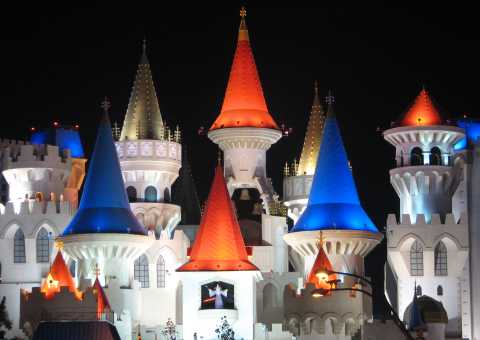 Vegas was a great adventure: We walked the length of
The Strip, a three-mile stretch which constitutes most of "Vegas culture." Gambling is their industry,
and it is as polluting as most industries you could name. Every evening dozens of low paid hustlers stand
on street corners handing out printed material selling everything from Grand Canyon tours and trips to
Disneyland, to whorehouses and peep shows at what are euphemistically called "gentlemen's clubs." Most
people simply refuse to grab the material from the extended hand. ("Thanks, but we're trying to cut back!")
Those who do, often throw it down. The town is littered with this outfall from the Vegas production plant.
Vegas was a great adventure: We walked the length of
The Strip, a three-mile stretch which constitutes most of "Vegas culture." Gambling is their industry,
and it is as polluting as most industries you could name. Every evening dozens of low paid hustlers stand
on street corners handing out printed material selling everything from Grand Canyon tours and trips to
Disneyland, to whorehouses and peep shows at what are euphemistically called "gentlemen's clubs." Most
people simply refuse to grab the material from the extended hand. ("Thanks, but we're trying to cut back!")
Those who do, often throw it down. The town is littered with this outfall from the Vegas production plant.
Remember, the town is built on taking and losing. What few winners there are, are played up, creating an
illusion of opportunity for wealth without labor! Casinos have ingenious ways of separating people from
their funds. Change machines in Vegas take any U.S. bill up to $100. There are ATM machines right at the
gaming tables.
As we walked through and between casino after casino from early afternoon on, there was an odor to the place.
Elsewhere we have observed that tourism is a clean industry; not so in Vegas. The stench of humanity and the
racket of its play is overwhelming. The dense-pack nature of The Strip is such that it is pedestrian combat
to get from place to place. The air is clogged with the smell of food ranging from MacFries and KingBurgers
at their usual prices, to eggs & bacon for $1.99, breakfast buffet with 50+ items for $3.99, and steak
dinners for as little as $4.95 at the packed casino diners. Note: Don't rent a car to get around; The Strip
is a 24-hour traffic jam. Sound awful? It is great fun; interesting, entertaining, educational, and
energizing!
By the way, in the low-priced and attractive buffets, they place the canned fruit, breads, fillers and
"low end items" first, and the waffles, crepes, omelets, meats, and fresh fruit, late in the line - after
folks have already filled their plates with canned goods and breads!
Vegas is moving to cater to the Baby Boomers. They exhort people not to waste food. There are yogurts,
veggies and fresh fruits available. There are theme parks which are fun for kids and adults. ("Here, kids,
go play in the theme park while your parents gamble with your college fund!") For a thrilling rollercoaster
ride, the one at Circus Circus is a high velocity indoor ride with two loops, two spirals, and death defying
drops. The roller coaster ride at MGM Grand, however, is a kiddy ride for the cardio-challenged. The entire
Circus Circus theme park is indoors and just delightful.
If you do not want "the kid thing" in Vegas, pick a hotel-casino which does not have kiddie accommodations,
such as the Flamingo, Aladdin, Caesar's, etc., on The Strip. Downtown casinos, on the old strip, are also
more kid-free.
All that said, the shows were fantastic. We did not gamble, but they still got our money! The entertainment
was worth the price (from about $20 to $75 per ticket). Shows included a live theatrical jousting dinner
show a la Excalibur & Knights of the Roundtable, Siegfried & Roy (magic with too much stage smoke and poor
lighting to support/conceal the illusions), Mystere (a fabulous circus show by Cirque de Soliel), Melinda -
First Lady of Magic (superb), Comedy at the Improv (very funny), Country Tonight (an excellent C & W variety
show), etc. We also took a day off to visit one of the world's engineering marvels, Hoover Dam, about an
hour's drive from Vegas. Spending a week in Vegas provided insights we never got in the 4-day/3-night tour
packages.
Out in the desert, about an hour west of Las Vegas, is a place called Stateline where there are yet more
casinos (yah-dah, yah-dah, yah-dah), and the world's highest and longest outdoor rollercoaster. It includes
a drop which, for one brief and terrifying moment, felt like the engineers made a serious design error, or
we got on the wrong train! A wild and fun ride out in the desert.
Moving on, we headed for San Francisco, where Melody was born, to visit with Phil's brother, Joe,
sample that unique city, and take Heather to Alcatraz! We indulged ourselves in sushi of (almost) every
type (tuna is soft but firm with a mellow flavor; and red snapper, true to its name, is more crisp and a bit
more fishy, etc.). We visited Berkeley, intellectual home to the 60's movement; and Haight-Ashbury,
commercial, emotional and psycho-pharmacological home to the same period! Imagine two Boomers standing on
the steps of Ben & Jerry's in Haight-Ashbury, mulling over the names of such people as Grace Slick, Janis
Joplin, Country Joe Whatshisname, and Jimi Hendrix (whose name we could not recall without going through
several variations), and shopping for Patchouli (remember the perfume of the 60's? -- it's still a hot item
in H-A!).
We departed San Francisco just ahead of the first storms of the new year, and managed to escape San
Bernardino in similar fashion driving through a wind and rain storm in the mountains north of town. Near
Livermore, just east of San Francisco, we drove through an area with more than 5000 hi-tech wind mills
generating enough electricity for the residential needs of San Francisco and Washington, DC, combined.
It was an amazing view of these huge towers topped with spinning mills filling the landscape to the horizon.
Finally it was back to the desert, the northern reaches of the great Sonoran Basin. Near Boron, home of the
20-Mule Train Museum, there was also a solar collection array covering several acres. Very California.
We completed our holiday loop back at Phoenix, returning Heather to college in Fairbanks. We headed back to
Tucson and thence to Willcox (pop: 3200) hometown to the last of the singing cowboys, Rex Allen. The town
has all the charm of a farming community in the high desert where high school rivalries, the local cinema
(seating for 144), and the ice cream store are still major social elements. There are supermarkets,
truckstops, hardware and lumber stores, and lots of fast food places out on the Interstate. The area
features fruit and nut orchards (one million apple trees within 30 miles of town) long flat roads, pleasant
folks, serious bird watching (this is where the Sandhill Cranes migrate to, from Alaska), quail hunting,
and summer-like temperatures. First run movies at the theater uptown are $3 a person -- Fri., Sat., Sun,
and Mon., only!
For now we have joined the nomads of Interstate-10 along with countless other Northerners and Canadians
driving campers, trailers, 5th wheels, and land yachts, seeking the sun. We are home-based for several weeks
at an RV park where there is opportunity to use the spa, pool, exercise facilities and weight room;
bicycle in the desert, read and write, edit video tape, and plan. Temperatures have gone from the 70's and
sunny, to the 20's with snow on the cactus.
We appreciated the holiday cards from our many friends. It is nice to know that in this age of travel,
distance, and burgeoning responsibility, people still stay in touch, one way or another.
LIFE IN THE DESERT SOUTHWEST March 1, 1995 Vol 7
Greetings Loyal Readers, from The Desert Southwest
Wherein we visit a world class rodeo, Indian strongholds, and Tombstone, the town too tough to die.
Traveling about the country, we have enjoyed taking whatever a town has to offer, potluck. When we arrive
in an area we ask around and identify things that look interesting. We have seen much, and always felt we'd
have to return for things we missed.
February and March are great months in Tucson and much of Arizona, which has a rich Western history.
We attended part of the 70th annual La Fiesta de los Vaqueros (Tucson Rodeo).
It resembles similar celebrations of culture and history in other communities. The event is said to have the "longest
non-mechanized parade in the world" and features a vast array of horse-drawn vehicles such as buckboards,
stage coaches, covered wagons, fire pumps, surreys, trotting carts, and oxcarts and their appropriate riders,
drivers and drovers. Animals included elegant show horses, a matched team of six horses in an in-line
hitch pulling a hand-made Western stage coach; cow ponies, quarter horses, etc.; powerful draft horses, oxen,
mules, and donkeys. There were traditional marching brass bands, strolling Mexican-style musicians,
Indians in full regalia, and parade marshals on horseback. What was mercifully absent were commercial
vehicles, car clubs, motorhomes, municipal fire trucks, and such. The Governor, Fife Symington, rode in a
neat horse-drawn buckboard. Very frontier.
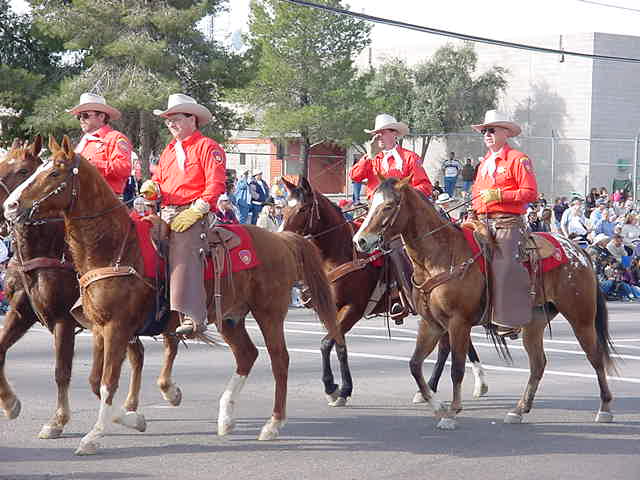 The rodeo was replete with ceremony, symbolism, and sentiment. It took a suspension of our other
sensibilities to watch a cowpoke ride a large animal that was madder than hell because someone cinched a
narrow strap across tender aspects of his anatomy and kicked him (it's frequently a him) in the shoulders.
("'Scuse me, Slim, but that there large animal would be a whole lot more cooperative if you'd stop squeezing
him, uh, THERE ...") That aside, the score at the rodeo: cowboys - 3; large animals - 7. Strange cultural
artifact (sport); but then this is not our culture. The pageantry is hard to beat. It was a spectacle -
even Tom Selleck made a low key appearance while in the area working on his next feature film which
apparently deals with cowpoke stuff.
The rodeo was replete with ceremony, symbolism, and sentiment. It took a suspension of our other
sensibilities to watch a cowpoke ride a large animal that was madder than hell because someone cinched a
narrow strap across tender aspects of his anatomy and kicked him (it's frequently a him) in the shoulders.
("'Scuse me, Slim, but that there large animal would be a whole lot more cooperative if you'd stop squeezing
him, uh, THERE ...") That aside, the score at the rodeo: cowboys - 3; large animals - 7. Strange cultural
artifact (sport); but then this is not our culture. The pageantry is hard to beat. It was a spectacle -
even Tom Selleck made a low key appearance while in the area working on his next feature film which
apparently deals with cowpoke stuff.
Tucson is an oasis for nomads of Interstate 10 on the eastern fringe of the Sonoran Desert. This place is
Mecca to snowbirds, making it a virtual impossibility, without connections, to spontaneously locate a place
to park for a couple of weeks. Yes, we had connections. Connie, mother of good friends here, was able to get
a spot for us in the trailer park where she lives. Seeing what they call "trailer parks" in this part of the
world has reorganized our thoughts regarding these communities. They are neat, clean, secure, inhabited by
interesting and friendly people from all over the country. The parks have no resemblance to stereotypical
trailer parks, a la Our Lady of the Perpetual Quonset Hut, seen elsewhere. Manufactured homes have come a
long way.
We attended an enormous RV show, which, having lived in a 27'x8' (outside dimensions) motorized box for the
past six months, piqued our interest. The nicest RVs included washer/dryer, satellite dishes, ya-da, ya-da,
ya-da, and cost way more than the house we sold on Chena Ridge! They also get about 4 miles to the gallon -
genuine land yachts.
We made it to Tombstone with friends from Fairbanks - we had coordinated by phone to meet with a Captain of
the Discovery III, Jim Binkley, since last Fall. Another Fairbanks couple was in Willcox by coincidence,
driving their RV back to Fairbanks! Tombstone was great fun - very connected to the kind of visitor
industry work I started doing on the Discovery III in Fairbanks, last May. The most interesting thing we
learned was that Morgan Earp (Wyatt's brother) was "shot from the second floor" of a Tombstone hotel.
(It's a wonder they found the body! What is the trajectory of a man "shot from the second floor"?) The
town of Tombstone has a colorful history which has been thoroughly developed. It is a treat of gift shops,
saloons, meller-drammer, silliness, and history -- a sort of southwest chili stew cooked up by creative
locals with the help of Time/Life's "History of the Old West" thrown in for authenticity.
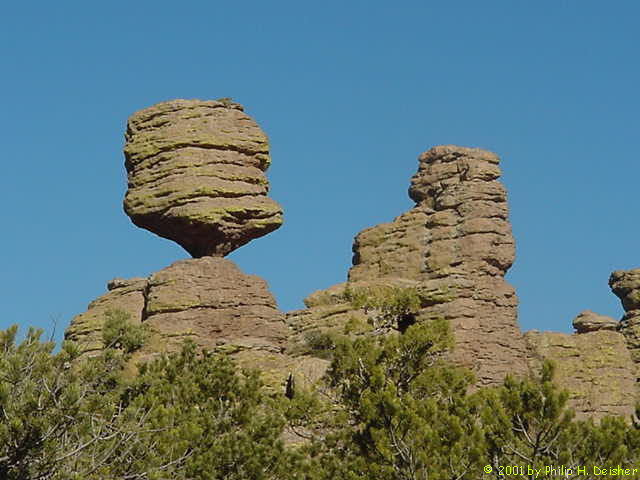 Some of the most spectacular scenery, from desert mountains to riparian valleys, is in Chiricahua National
Monument just south of Willcox.This is one of those areas where pillars of rock stand tall in the sun,
with boulders weighing hundreds of tons balanced precariously (it would seem) at their pinnacle. The
country is magnificent. We also hiked the Cochise Stronghold, where Chief Cochise, one of the greatest
warriors of all time, held out until his natural death, at which time he was buried by his people in an
undisclosed location. The area is rugged but has water, wildlife, and plenty of room to hide out. It is
easy to see how his people held out in this area. It is harder to understand why they had to.
Some of the most spectacular scenery, from desert mountains to riparian valleys, is in Chiricahua National
Monument just south of Willcox.This is one of those areas where pillars of rock stand tall in the sun,
with boulders weighing hundreds of tons balanced precariously (it would seem) at their pinnacle. The
country is magnificent. We also hiked the Cochise Stronghold, where Chief Cochise, one of the greatest
warriors of all time, held out until his natural death, at which time he was buried by his people in an
undisclosed location. The area is rugged but has water, wildlife, and plenty of room to hide out. It is
easy to see how his people held out in this area. It is harder to understand why they had to.
We hiked for the better part of a day into and back out of Coronado National Park in the Catalina Mountains
north of Tucson. The weather on February 20th was in the 70's.
The richness of growth in the desert is captivating including the majestic saguaro (pron: Soo-war-oh) cactus
(The Arizona state flower), sycamore
trees, Palo Verde, ocotillo, beaver tail prickly pear, buckhorn, and other fascinating flora. Fauna were
harder to come by. No snakes, no scorpions, no large mammals. A few prairie dogs, small but colorful birds,
and one or two tiny lizards. The trail led deep into the mountains, terminating at a series of water falls
just a few miles from city limits. It was remarkable to see so much water cascading so close to the desert.
Speaking of water, there was an area-wide thunderstorm in Tucson which reminded us of Fairbanks. See,
invariably there are road signs which caution people to avoid certain roads and washes if there is rain.
And invariably some jock has to brave it - reminiscent of the last person to cross the river ice in
Fairbanks before breakup -- with somewhat deadlier results.
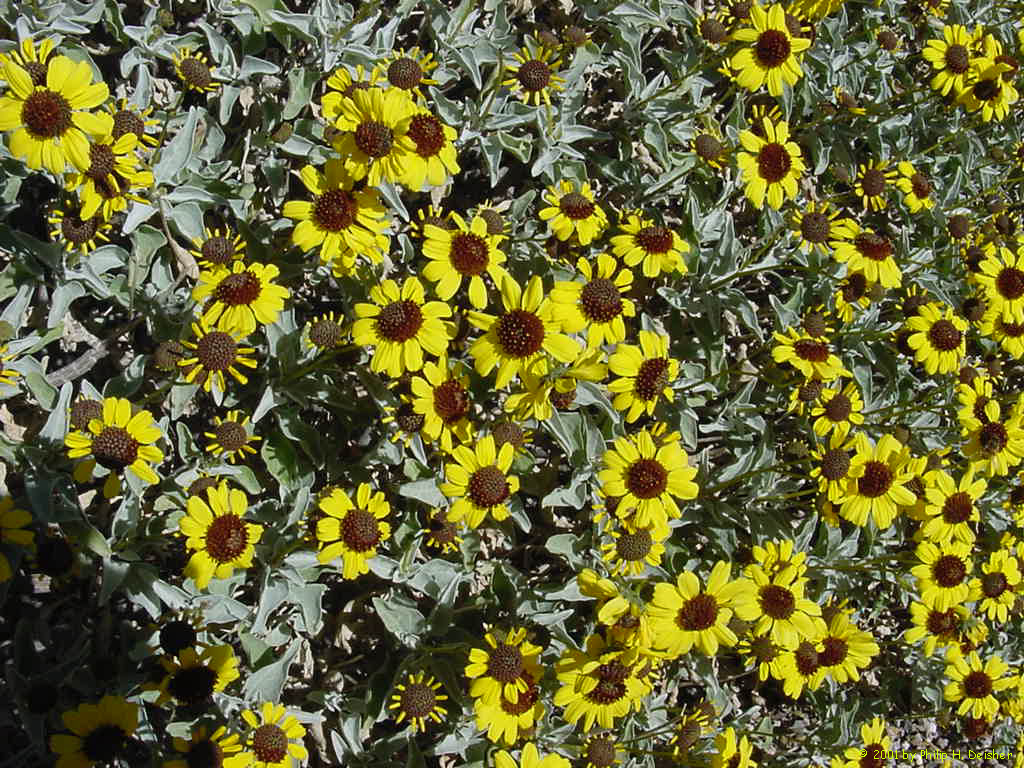 This year's unusually heavy rains are predicted to support the most brilliant display of desert spring
flowers since 1979. Such displays are rare - prior to 1979 there was a nice display in 1940! So we will be
taking the video camera into the desert for this year's flowerworks.
This year's unusually heavy rains are predicted to support the most brilliant display of desert spring
flowers since 1979. Such displays are rare - prior to 1979 there was a nice display in 1940! So we will be
taking the video camera into the desert for this year's flowerworks.
For the most part fuel prices here are on a par with Alaska. Cheapest is good old regular gasoline, which
is relatively rare in Alaska, at about $1.06 per gallon. Unleaded runs in the $1.09-$1.19 range (saw it
once as low as $1.05), and premium unleaded is up around $1.25 to $1.30. Soft drinks in cans are as low as
$5 for three 12-packs (Safeway Select) and $2.50 a 12-pack for brand name stuff like Coke and Pepsi. Safeway
Select Beer (no kidding) is on special for as low as $3/12-pack.
We have booked RV passage on the Alaska ferry Taku,, Prince Rupert, BC, to Haines, AK, for early April.
We plan to spend 7-10 days in Anchorage and then return to Fairbanks. We look forward to visiting friends
and family in Anchorage and once again reuniting with our good friends and colleagues in Fairbanks for the
summer.
NORTH TO ALASKA April 10, 1995 Vol 8
Back home, in Alaska:
We have taken much from our journey through America. As you may have gathered from our monthly musings,
living in the "colonies" with only brief visits to the "continent" provides a wholly different view of the
United States than an extended pilgrimage! We have tried to share some of our Epiphanies with you, thinking
that they would, at the least, be entertaining (Ha-Hah!), and at best, informative (Hmmmm).
If I "earned" anything, it is that, to fully appreciate the American experience requires much more than
classroom exposure to history and geography. It is perhaps presumptuous to compare our experience with that
of the French historian and traveler Alexis de Tocqueville. But on one level his observations of America in
the mid-1800s contained the wonder we have felt as we observed and at times participated in this country in
brand new ways.
Having visited places like Gettysburg and San Antonio, to name just two, it seems that a people who have shed
blood for their homeland have different feelings than people who have simply been granted their status by
government fiat. For instance, while the South may have lost the Civil War, and the Republic of Texas
ultimately joined the United States, the level of membership feeling of those places is distinctly different
from those territories which joined the Union after petitioning Congress, like Alaska and many other Western
States, virtually asking for admittance with little in human cost. (No, this is not an endorsement for human
sacrifice, merely an observation.) The difference is palpable, but defies easy expression, demonstrating
the need for direct exposure to places like the Alamo, the battlefields at Manasas and Gettysburg, and even
such monuments as Mt. Rushmore and Chiricahua.
I encourage every parent of high school kids to take them on trips, or send them to relatives Outside, to
experience this land. (Conversely, Alaska would be a good experience for folks from Outside as well!) I am
convinced it is an immersion equivalent to Baptism in its ability to inspire appreciation, creating
evangelists for our common heritage. I would also suggest that the trip be properly "sold" - not an exile,
but a gift - to experience the wider culture that is our country.
Traveling extensively along the Mexican border reminds us that America is a melting pot. The diversity of
cultures is exciting: Cajuns, Mexicans, American Indians and more. The opportunity to learn what other
people believe, to hear their languages and share in their cultures, is rich and thrilling. As a "melting
pot", America is a sort of "cultural stew, not a tossed salad!" as one nomad of the interstate exclaimed.
(By the way, if a year's travel is going to cost roughly the same as a year at Harvard, we hope we've come
away with something fresh in our way of looking at this world!)
Coming across the border from Canada we were intrigued by the questions the inspector asked.
"How many guns?" "Pets?" "More than $10,000 in cash?"
How MANY guns? Are you still beating your wife?
$10,000 in cash? What sort of question is that? "We've been traveling for seven months! We're broke."
"In that case, go ahead."
They really take that "Give me your poor -- your wretched refuse" stuff seriously!
We are excited to be back in Alaska, rooted once again in the soil from which we sprang.
As we turned south at Tok heading for Anchorage, we were taken with the feeling that, indeed, we were coming
home. The beauty of the Wrangell Mountains is as wonderful to us as the Saw Tooth Mountains in Idaho or the
Blue Ridge Mountains/Skyline Drive in Virginia. The Wrangells are also larger, snow covered, and familiar.
Having Mts. Sanford and Drum as our companions was like having old friends share the day. A committee of three
caribou paraded down the road in front of us for about a half mile. Later a band of perhaps two dozen caribou
made us wait while they crossed the road in their own good time. Take your time, old friends.
It was grand to visit with friends and family in Anchorage during what turned out to be a truncated stay in
our haste to get back to Melody's job at the University of Alaska Fairbanks. Still, we had nice visits and
were accompanied by Denali (Mt. McKinley) on a clear bright day driving back to Fairbanks on April 8.
The geese are coming. We saw Canada Geese along the Skeena River on our way to catch the Alaska ferry to
Haines at Prince Rupert, BC. We saw them again in Anchorage. They arrive in Fairbanks with uncanny timing
(like the swallows at Capistrano) on April 20 or 21 -- or, like this year, as early and the 10th. They'll
press North to nest for the summer. Maybe we'll meet them again pressing south this fall! Spring is here.
You, dear readers, have been patient. Although you were not selected exactly at random to receive our
missives, some of you may have wondered why we kept you informed of our activities. Simply being a relative
meant you were "on the list"! Other acquaintances and friends did say things like "Keep in touch" - so we
did. Then there are friends we felt we had lost touch with, and wanted to let you know that in the hectic
recent years you'd not been forgotten.
The discipline of producing a newsletter has been good for us as well. Maintaining a travel journal reminds
us of our good fortune, where we have been, and something of what we've been doing. Much of the pleasure of
such things comes from sharing with people important in our lives. In thinking about what others might want
to know, we have organized our thoughts and undoubtedly gleaned more from the investment than if we'd simply
set off to roam, without thought to what we were experiencing or how to describe it.
It has been fun having you along for the trip.
Have a great summer ... and let's do this again sometime!
Other RV Log Pages
RV LOG ONE, winter 1994-95
RV LOG TWO, winter 1995-96
RV LOG THREE, winter 1996-97
RV LOG FOUR, winter 1998-1999
RV LOG FIVE, winter 1997-98
RV LOG SIX, winter 1999-2000
RV LOG SEVEN, winter 2000-01
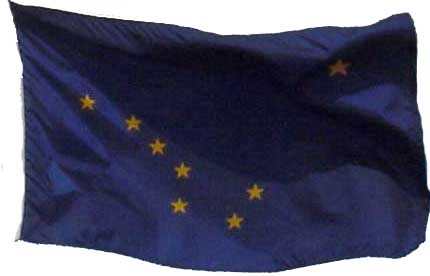
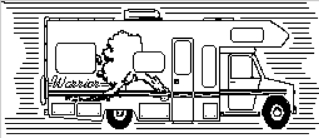

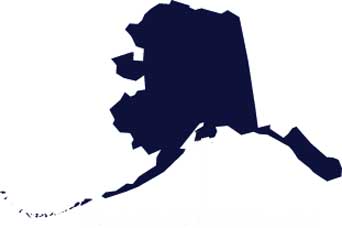
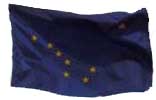
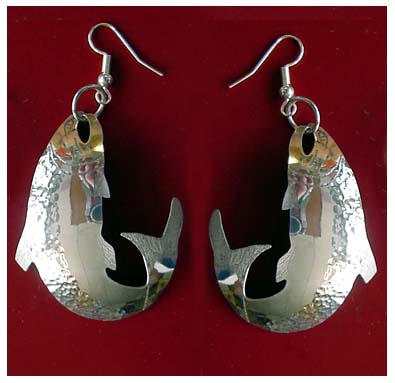

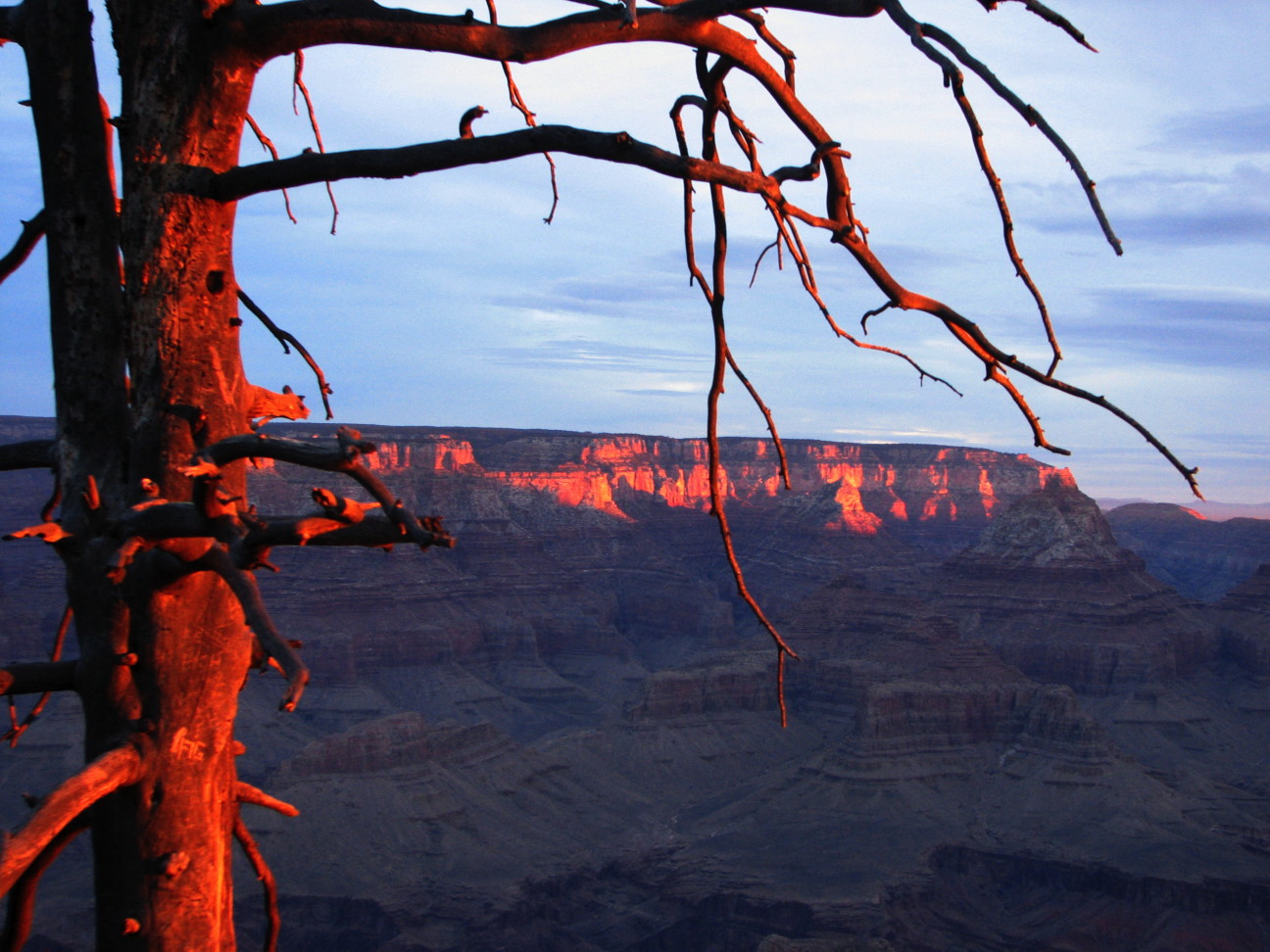
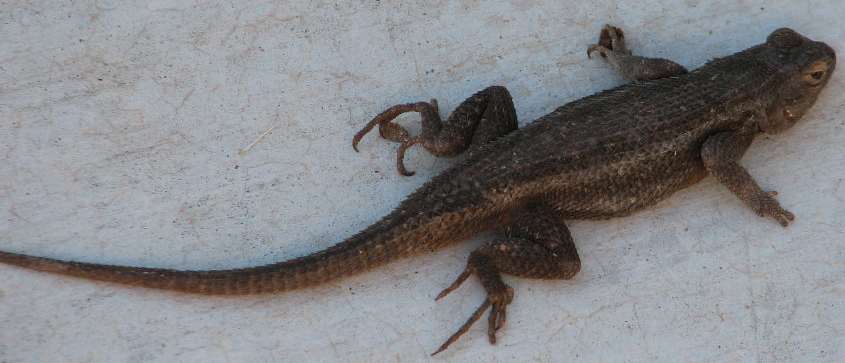
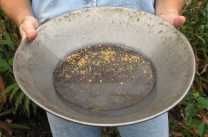

 We skirt major cities, seeking the
more picturesque smaller state highways. They support my stereotype of an idyllic and pastoral America (the less idyllic
images are available on TeeVee!). With many attractions and most RV parks closed for the season, we have an interesting
time finding places to park for the night. Melody (Short-Straw) Erickson drove one of the heaviest truck traffic stretches
of interstate in the country, near Chicago. The trucks, tractors with up to three trailers, in every configuration, tore
past us by the dozens at speeds exceeding 65 MPH, four lanes across, for hours. That is what that part of the country is
about: transportation, supply, and manufacturing. The highway system, air traffic, and even water (The
Great Lakes and Mississippi River) are a huge part the economy -- meatpacker to the world.
We skirt major cities, seeking the
more picturesque smaller state highways. They support my stereotype of an idyllic and pastoral America (the less idyllic
images are available on TeeVee!). With many attractions and most RV parks closed for the season, we have an interesting
time finding places to park for the night. Melody (Short-Straw) Erickson drove one of the heaviest truck traffic stretches
of interstate in the country, near Chicago. The trucks, tractors with up to three trailers, in every configuration, tore
past us by the dozens at speeds exceeding 65 MPH, four lanes across, for hours. That is what that part of the country is
about: transportation, supply, and manufacturing. The highway system, air traffic, and even water (The
Great Lakes and Mississippi River) are a huge part the economy -- meatpacker to the world.
 THE FABLED EAST: 11/30/94 Vol. 4
THE FABLED EAST: 11/30/94 Vol. 4
 Vegas was a great adventure: We walked the length of
The Strip, a three-mile stretch which constitutes most of "Vegas culture." Gambling is their industry,
and it is as polluting as most industries you could name. Every evening dozens of low paid hustlers stand
on street corners handing out printed material selling everything from Grand Canyon tours and trips to
Disneyland, to whorehouses and peep shows at what are euphemistically called "gentlemen's clubs." Most
people simply refuse to grab the material from the extended hand. ("Thanks, but we're trying to cut back!")
Those who do, often throw it down. The town is littered with this outfall from the Vegas production plant.
Vegas was a great adventure: We walked the length of
The Strip, a three-mile stretch which constitutes most of "Vegas culture." Gambling is their industry,
and it is as polluting as most industries you could name. Every evening dozens of low paid hustlers stand
on street corners handing out printed material selling everything from Grand Canyon tours and trips to
Disneyland, to whorehouses and peep shows at what are euphemistically called "gentlemen's clubs." Most
people simply refuse to grab the material from the extended hand. ("Thanks, but we're trying to cut back!")
Those who do, often throw it down. The town is littered with this outfall from the Vegas production plant.
 The rodeo was replete with ceremony, symbolism, and sentiment. It took a suspension of our other
sensibilities to watch a cowpoke ride a large animal that was madder than hell because someone cinched a
narrow strap across tender aspects of his anatomy and kicked him (it's frequently a him) in the shoulders.
("'Scuse me, Slim, but that there large animal would be a whole lot more cooperative if you'd stop squeezing
him, uh, THERE ...") That aside, the score at the rodeo: cowboys - 3; large animals - 7. Strange cultural
artifact (sport); but then this is not our culture. The pageantry is hard to beat. It was a spectacle -
even Tom Selleck made a low key appearance while in the area working on his next feature film which
apparently deals with cowpoke stuff.
The rodeo was replete with ceremony, symbolism, and sentiment. It took a suspension of our other
sensibilities to watch a cowpoke ride a large animal that was madder than hell because someone cinched a
narrow strap across tender aspects of his anatomy and kicked him (it's frequently a him) in the shoulders.
("'Scuse me, Slim, but that there large animal would be a whole lot more cooperative if you'd stop squeezing
him, uh, THERE ...") That aside, the score at the rodeo: cowboys - 3; large animals - 7. Strange cultural
artifact (sport); but then this is not our culture. The pageantry is hard to beat. It was a spectacle -
even Tom Selleck made a low key appearance while in the area working on his next feature film which
apparently deals with cowpoke stuff.
 Some of the most spectacular scenery, from desert mountains to riparian valleys, is in Chiricahua National
Monument just south of Willcox.This is one of those areas where pillars of rock stand tall in the sun,
with boulders weighing hundreds of tons balanced precariously (it would seem) at their pinnacle. The
country is magnificent. We also hiked the Cochise Stronghold, where Chief Cochise, one of the greatest
warriors of all time, held out until his natural death, at which time he was buried by his people in an
undisclosed location. The area is rugged but has water, wildlife, and plenty of room to hide out. It is
easy to see how his people held out in this area. It is harder to understand why they had to.
Some of the most spectacular scenery, from desert mountains to riparian valleys, is in Chiricahua National
Monument just south of Willcox.This is one of those areas where pillars of rock stand tall in the sun,
with boulders weighing hundreds of tons balanced precariously (it would seem) at their pinnacle. The
country is magnificent. We also hiked the Cochise Stronghold, where Chief Cochise, one of the greatest
warriors of all time, held out until his natural death, at which time he was buried by his people in an
undisclosed location. The area is rugged but has water, wildlife, and plenty of room to hide out. It is
easy to see how his people held out in this area. It is harder to understand why they had to.
 This year's unusually heavy rains are predicted to support the most brilliant display of desert spring
flowers since 1979. Such displays are rare - prior to 1979 there was a nice display in 1940! So we will be
taking the video camera into the desert for this year's flowerworks.
This year's unusually heavy rains are predicted to support the most brilliant display of desert spring
flowers since 1979. Such displays are rare - prior to 1979 there was a nice display in 1940! So we will be
taking the video camera into the desert for this year's flowerworks.